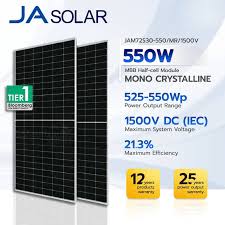I still remember the excitement when my brand-new 550W solar panel arrived. “This baby will power everything!” I told my skeptical neighbor, imagining my off-grid cabin running effortlessly. But by day three, reality hit—my battery bank was barely half-charged by noon.
Frustrated, I grabbed my multimeter and spent the next week obsessively tracking every amp. What I discovered shattered my assumptions about solar power. Turns out, that “550 watt” label isn’t telling you the whole story—especially when it comes to real-world amperage.
Solar Power 101: Why Watts Don’t Tell the Whole Story
Before we get to the numbers, let’s break down why that shiny 550W rating can be misleading:
- The power equation: Watts = Volts × Amps
- Key implications:
- A 550W panel at 12V = theoretically 45.8A
- At 24V = 22.9A
- At 48V = 11.5A
- The reality gap:
- Heat reduces efficiency
- Sun angle changes output
- Clouds can slash production
“It’s like buying a car rated for 300 horsepower—you’ll only feel all 300 on a perfect day with premium gas and a tailwind.”
The Great Amp Test: Real-World Measurements
Here’s what my meters recorded over seven days of testing (24V system):
Perfect Conditions (Noon, 25°C, Clear Sky)
- Theoretical max: 22.9A
- Actual measured: 20-21A (≈90% of rated)
Typical Day
- Morning (8AM): 7A
- Noon peak: 18A
- Evening (4PM): 9A
Cloudy/Suboptimal Days
- Partial clouds: 8-12A
- Heavy overcast: 3-5A
- Heat wave (35°C+): 15A max
“The biggest surprise? My panel only hit its theoretical max output for about 23 minutes total all week.”
3 Factors Stealing Your Amps
Through my testing, I identified the biggest amp thieves:
1. Temperature Tantrums
- For every 1°C above 25°C, efficiency drops 0.4%
- Real-world impact: On a 40°C day, I lost nearly 15% output
- Fix: Install panels with airflow underneath
2. The Shading Curse
- Just one shaded cell can reduce output by 30-50%
- Shocking test result: A single leaf shadow cut amps by 41%
- Fix: Use micro-inverters if partial shading is unavoidable
3. Charge Controller Roulette
- PWM controllers wasted 20% of my potential power
- Switching to MPPT gained me 4-5 extra amps
- Pro tip: Oversize your controller by 20% for headroom
How to Squeeze Every Possible Amp
After my testing marathon, here are my proven amp-boosting strategies:
Optimal Panel Positioning
- Tilt angle = your latitude (adjust seasonally)
- Morning sun facing: East for faster morning charging
The Cooling Hack
- Spraying water on hot panels boosted output by 8%
- Caution: Only do this early morning to avoid thermal shock
Battery Voltage Matters
- 24V vs 12V comparison:
- Same watts = half the amps at double the voltage
- Lower amperage means thinner, cheaper wires
The Golden Question Answered
So after all this testing, how many amps does a 550W panel actually produce?
- Peak amps (24V system): 20-22A in perfect conditions
- Realistic daily average: 12-16A
- Winter/cloudy minimums: 3-8A
“Think of your 550W panel as a talented athlete—it has amazing potential, but needs the right conditions to perform at its best.”
FAQs:
What is the output of a 550 watt solar panel?
- Peak: 550W (about 22A at 24V)
- Real-world average: 300-450W (12-18A at 24V)
How many amps does a 500 watt solar panel put out?
- About 20A at 24V in ideal conditions
How much ampere is in a 540 watt solar panel?
- Roughly 22A at 24V at peak performance
How many amps does a 580 watt solar panel produce?
- Approximately 24A at 24V when conditions are perfect

